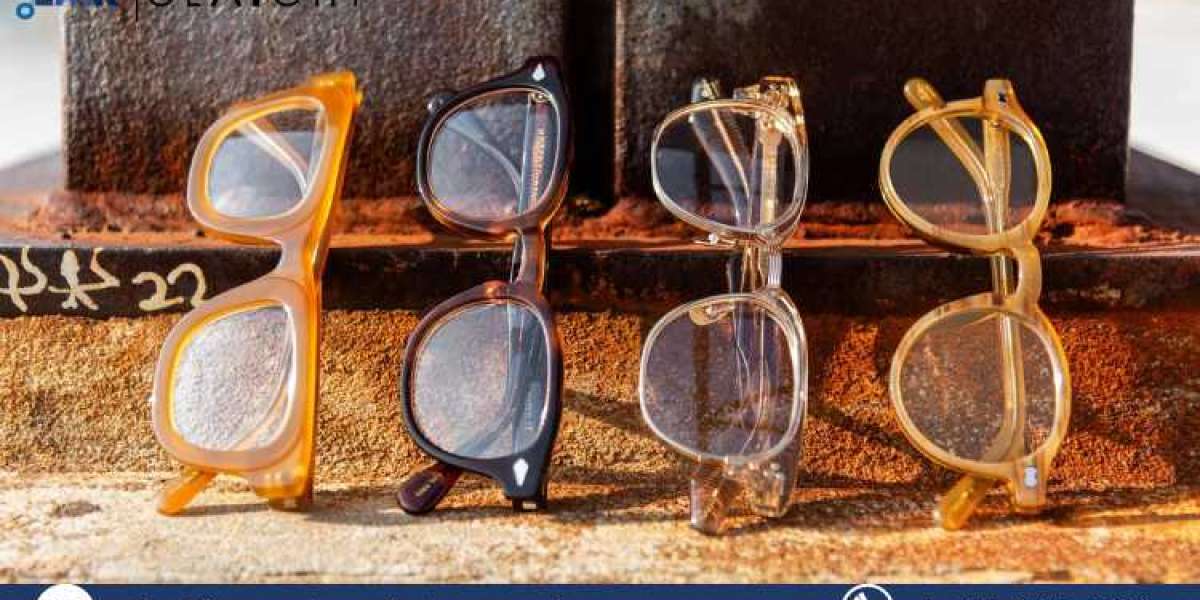The United States reading glasses market is poised for substantial growth over the forecast period, with an expected compound annual growth rate (CAGR) of 5.40% from 2024 to 2032. This growth is largely fueled by an aging population, increased digital device usage, and rising awareness of eye care. With consumers increasingly treating eyewear as both a functional necessity and a fashion accessory, the market is becoming more competitive. In this blog, we will explore the drivers, challenges, emerging trends, and key players shaping the landscape of the U.S. reading glasses market.
Market Dynamics
Key Market Drivers
Aging Population and Rising Incidence of Presbyopia
- One of the most significant factors driving the market is the aging U.S. population. As the baby boomer generation continues to age, a growing number of individuals are experiencing presbyopia—a natural decline in the eye’s ability to focus on close objects.
- According to the National Eye Institute, by 2030, nearly 40% of the U.S. population will be over 45 years old, an age range where presbyopia becomes increasingly common. This will drive a higher demand for reading glasses among both men and women, especially for everyday reading tasks.
Increase in Screen Time and Eye Strain
- With more Americans working remotely and spending hours on smartphones, computers, and tablets, digital eye strain has become a widespread issue. Blue light exposure from screens is causing discomfort, blurred vision, and headaches, which are contributing to the growing demand for blue light filtering lenses.
- The demand for reading glasses equipped with blue light filters has risen sharply, with brands like ICU Eyewear and Zenni Optical capitalizing on this trend. These glasses protect users from eye strain while offering magnification for close-up reading.
E-commerce and Customization Boom
- The convenience of buying reading glasses online has accelerated in recent years, especially due to the pandemic-induced shift toward digital shopping. Brands like Warby Parker and Zenni Optical have developed strong e-commerce platforms that allow customers to customize their glasses, offering a blend of convenience, affordability, and style.
- Online retailers are now incorporating virtual try-on technology and offering features like lens customization (magnification levels, tints, etc.) to cater to individual preferences. This level of customization is helping brands attract tech-savvy consumers who prefer seamless online experiences.
Market Restraints and Challenges
Increasing Competition from Alternative Vision Solutions
- The reading glasses market is facing growing competition from alternative solutions such as contact lenses and corrective surgeries like LASIK. While these methods offer long-term solutions to vision problems, they could potentially curb the demand for traditional reading glasses, particularly among younger demographics.
Price Sensitivity and Counterfeit Products
- The proliferation of cheap, counterfeit products available online, often sold at significantly lower prices, poses a challenge for established brands. Counterfeit glasses may lack the quality and safety features of branded products, making it difficult for genuine manufacturers to compete on price while maintaining quality.
Environmental Concerns and Sustainable Production
- As environmental awareness increases, consumers are becoming more conscious of the materials used in the manufacturing of eyewear. Brands that fail to adopt sustainable practices, such as using recycled materials or reducing plastic waste, may face backlash from eco-conscious consumers.
Trending Information and Market Segmentation
Technological Advancements and Innovations
Blue Light Filtering Technology
- The rise in screen usage has spurred the demand for blue light filtering lenses. Glasses equipped with these filters are designed to block or reduce blue light from digital screens, which can lead to eye strain, sleep disturbances, and long-term eye damage.
- Brands like Bausch Lomb and ICU Eyewear are incorporating this technology into their reading glasses, creating multifunctional eyewear that combines magnification with blue light protection. This innovation has become a strong selling point, particularly for individuals working in front of screens for long periods.
Smart Glasses and Adjustable Focus Lenses
- The next frontier in the reading glasses market may be smart glasses equipped with adjustable focus lenses, allowing users to fine-tune the lens magnification based on their needs. Companies like ThinOptics are already experimenting with foldable, ultra-portable designs, and the integration of smart features could soon follow.
- Smart glasses, particularly those with augmented reality (AR) capabilities, are expected to cater to the tech-savvy consumer who values functionality and innovation in their eyewear.
Sustainability and Eco-Friendly Materials
- As consumers become more environmentally conscious, brands are beginning to explore the use of sustainable materials such as recycled plastics, biodegradable frames, and eco-friendly packaging. Warby Parker and ICU Eyewear are among the brands actively working on reducing their environmental footprint.
Segmentation by Product and Distribution Channel
By Product Type
- Full-Frame Reading Glasses: Traditional and most popular, offering full magnification across the lens.
- Rimless and Semi-Rimless Reading Glasses: These lightweight designs are gaining popularity for their minimalist aesthetic and comfort.
- Foldable Reading Glasses: Growing in demand for their portability, particularly among travelers and professionals who need compact, on-the-go eyewear.
By Distribution Channel
- Retail Stores: Despite the rise in e-commerce, many consumers still prefer purchasing eyewear in-person to try before buying. Optical stores and pharmacies remain key retail channels.
- E-Commerce Platforms: Online shopping for reading glasses has seen significant growth, with retailers like Zenni Optical and Eyebobs offering robust customization options and virtual try-on features.
Competitive Landscape
Key Players in the Market
Guccio Gucci S.p.A.
- A leader in the luxury segment, Gucci offers premium reading glasses that cater to fashion-forward consumers. Their eyewear is positioned as a high-end accessory, appealing to affluent buyers looking for both functionality and style.
Eyebobs
- Known for their bold, quirky designs, Eyebobs has carved a niche in the market by appealing to consumers who want their reading glasses to be a statement piece. Their glasses are often associated with creativity and individuality.
ThinOptics, Inc.
- Pioneers in the foldable reading glasses space, ThinOptics focuses on portability. Their ultra-thin, flexible designs are engineered for convenience, catering to on-the-go consumers who need compact, pocket-friendly options.
Bausch Lomb Incorporated
- A legacy brand with a strong presence in eye care, Bausch Lomb offers a wide range of reading glasses that emphasize eye health. Their products often feature blue light filters and UV protection, appealing to health-conscious buyers.
Zenni Optical, Inc.
- A leading player in the affordable eyewear segment, Zenni Optical is known for offering customizable glasses at competitive prices. Their direct-to-consumer model has allowed them to scale quickly, especially in the online retail space.
Warby Parker Inc.
- Warby Parker revolutionized the reading glasses market with its direct-to-consumer business model, offering stylish yet affordable eyewear. Their focus on social responsibility, including donating glasses to underserved communities, has made them popular among socially conscious consumers.
Future Outlook and Emerging Opportunities
The U.S. reading glasses market is set to continue expanding, driven by technological advancements and evolving consumer preferences. Sustainability, blue light protection, and fashion-forward designs will likely dominate the market, with key players investing in product differentiation to stand out in an increasingly competitive landscape.
Smart glasses and adjustable-focus lenses are likely to be the next big trends, providing users with more functional and versatile options. Additionally, brands that prioritize sustainable production and eco-friendly materials will resonate strongly with environmentally conscious consumers, opening new avenues for growth.
FAQs (Frequently Asked Questions)
What is driving the growth of the reading glasses market in the U.S.?
- The growth is driven by the aging population, increasing screen usage, and demand for blue light filtering glasses.
Which companies are leading the U.S. reading glasses market?
- Key players include Gucci, Warby Parker, Zenni Optical, Bausch Lomb, and ThinOptics.
Are smart glasses becoming a trend in the reading glasses market?
- Yes, smart glasses with adjustable-focus lenses and AR capabilities are expected to become a major trend in the near future.



